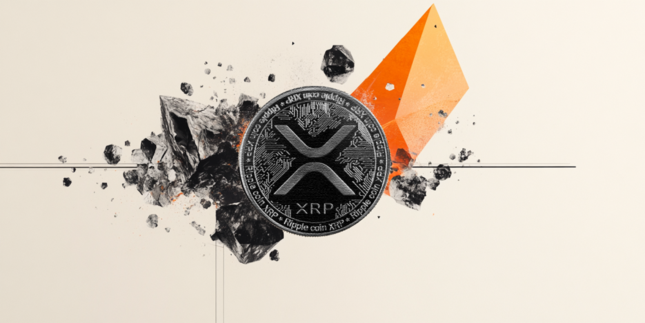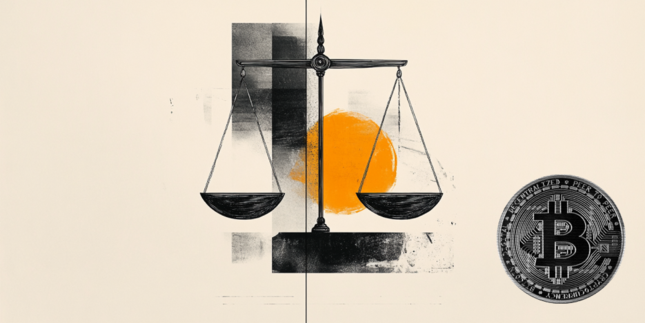Focus is now “exclusively on The Merge,” says Ethereum community manager as the deadline for the next stage of the transition to Eth2 grows closer.
The Ethereum community has been hard at work over the past few years, laying the foundation for its shift away from its current proof-of-work (PoW) algorithm which has formed the backbone of the blockchain’s operation up until today.
Ethereum’s switch to its proof-of-stake- (PoS-) powered Ethereum 2.0 chain is edging closer to reality, with recent updates to its blockchain resulting in the issuance of Ether (ETH) becoming deflationary.
Recent upgrades have resulted in deflationary issuance of ETH, where the burning of a portion of transaction fees has surpassed the issuance of new ETH through mining. Some in the industry didn’t expect this to happen before the network upgrades to Ethereum 2 (Eth2). It’s an important factor that is envisaged to drive the value of the underlying cryptocurrency upward in the months and years to come.
The influence of this earlier-than-expected shift to the deflationary issuance of ETH cannot be understated in terms of its effects on the value of ETH. Furthermore, industry participants believe this deflation is to increase once the network fully transitions to Eth2, down more than 10 times from its current issuance of 2 ETH per block mined.
Recent developments
Late last year, the foundation was laid for the transition to Eth2 as the proof-of-stake Beacon Chain went live, allowing users to stake Ethereum in order to become validators. This would essentially replace the role of current miners that use physical hardware to validate transactions, add new blocks and generally maintain the network.
As of November 17, 2021, there are over 260,000 validators that have staked the minimum 32 ETH needed to become a validator on the chain. At the time of writing, the current amount of Ethereum tokens staked sits at 8,327,638 ETH — valued at around $34.1 billion.
The value of Ethereum has been on a steady uptrend in 2021 and has hit new highs driven by a variety of factors this year, including the exploding popularity of the decentralized finance (DeFi) space of which a large portion operates on the Ethereum blockchain.
The most anticipated upgrade of 2021 was the London hard fork that introduced a handful of Ethereum Improvement Proposals (EIPs). One particular proposal, EIP-1559, was a point of contention due to the change of fee structures earned by miners and paid by users.
A sore point was the built-in ETH burn mechanism that destroys a portion of Ether used to pay a transaction fee. This irked Ethereum miners before the upgrade, given that transaction fees are a driving factor that incentivizes miners to maintain the network.
An important upside of the London hard fork, which took place in July 2021, was the deflationary action of the ETH burn mechanism. Every transaction now sees a percentage of ETH destroyed, gradually leading to more ETH being removed from the ecosystem that should increase the scarcity and value of ETH as an asset.
London was also touted to see a reduction in fees paid by users of the Ethereum network. This eventuality did not quite come to fruition with high fees still a point of concern in November 2021. This has seen some investors look to make use of multichain decentralized finance networks in order to mitigate high transaction fees still being experienced on the Ethereum mainnet.
The most recent upgrade to the Ethereum network following London was coined as Altair. As Beiko told Cointelegraph, Altair served as the first update to the Beacon Chain since its launch in December 2020. According to him, the upgrade served as a test for the merge while also serving the purpose of aligning incentives for validators:
The upgrade raised the penalties that validators receive if they propose invalid blocks or are offline to their ‘true’ levels. When the Beacon Chain launched, these penalties were lowered to be more lenient towards stakers in the early days. Now that we know that things work reliably, it was time to bring the penalties to their true level.”
Ben Edgington, lead product owner of Teku, an Eth2 client created by ConsenSys, also weighed in on the intricacies of the Altair upgrade: “We'd never done it before, and wanted to make sure everything worked out before we do the big upgrade when we move over to proof-of-stake.” He added that “it went very smoothly, and we are confident that we can coordinate future upgrades.
Edgington highlighted some of the material changes introduced to Altair while conceding that most of these upgrades are general improvements that might not have been visibly noticeable to stakers.
Sync committees were introduced as an enhancement that will allow light clients to trustlessly sync up with the state of the Beacon Chain, according to Edgington, making it “possible in the future of having things like an in-browser wallet that does not rely on any trusted third-party.”
Block rewards were also fine-tuned in terms of the way they are calculated internally. Proposing blocks now receive a higher reward along with some more technical changes, while staking rewards remain unchanged.
Lastly, an important change was made to slashing penalties, which were set to a reduced threshold when the Beacon Chain went live last year. Slashing is used to discourage validators from misbehaving on the network, examples of which would include being offline and therefore being unable to sign transactions. As Edgington explains, there’s now been ample time to judge the efficacy of the mechanism:
Slashing penalties were reduced at the start of the Beacon Chain to increase stakers’ confidence. Now that we are all much more comfortable with staking, penalties are gradually being increased towards their ‘crypto-economically correct’ values.
A number of representatives from Ethereum client teams took part in a workshop titled Amphora in October. The group collaborated to carry out a set of development milestones to mimic the Eth2 merge on a test net - effectively serving as a dress rehearsal for the real thing some time next year. Edginton unpacked what was accomplished at the workshop and gave a best estimate for the shift to Eth2 taking place sometime in Q2 of 2022.
We are now working towards a public Merge testnet called Kintsugi that is planned to go live in early December, next month. Kintsugi is intended to implement a release candidate design for The Merge, meaning that the technical implementation work is all but done. After that, there is only a process of testing, risk management and governance required before The Merge can happen.
Focus now squarely on ‘The Merge’
The roadmap toward Eth2 has one more minor upgrade scheduled in 2021. Arrow Glacier is composed of the solitary EIP-4345, which changes the parameters of what is known as Ethereum’s Ice Age Difficulty Bomb.
The Difficulty Bomb is the name for the planned increasing difficulty level for miners in the current PoW Ethereum mainnet. When the Bomb goes live, the Ethereum network’s mining difficulty will increase exponentially at a certain threshold and will serve as one of the driving factors to incentivize the overall Ethereum network to participate in the merge to Eth2.
Beiko said that the main focus for the wider Ethereum development community is now exclusively on ‘The Merge’, signaling the start of the final chapter in the blockchain’s evolution to PoS consensus.
What to expect when Eth2 becomes a reality
While the exact date of ‘The Merge’ is not yet set in stone, both Beiko and Edgington highlighted the fact that Ethereum developers are now solely focused on the final steps towards Eth2.
Nevertheless, many cryptocurrency users and enthusiasts are asking the same question. What can happen when Eth2 becomes a reality? Edgington gave some insights into how the network will operate in conjunction with various layer-two solutions providing improvements to scalability:
The move to proof-of-stake will not immediately provide any significant extra throughput to the Ethereum chain, so I don't expect it to have a measurable effect on gas prices. The scalability strategy in Ethereum now revolves around layer-two solutions like the various roll-ups that are currently being deployed. Once The Merge is done, we will focus on providing data shards within the Ethereum protocol that will allow roll-ups to scale massively.”
Edginton also noted that issuance of Ether will drop by 2 ETH per block post-merge as a result of the removal of the mining block reward, while EIP-1559 will continue to burn Ether as it does today: “As a result, it is very likely that the total supply of Ether will shrink for the foreseeable future.
Viktor Bunin, protocol specialist at Coinbase, highlighted the importance of the London hard fork earlier this year and its widely debated EIP-1559. The mechanisms set in motion by the upgrade give some idea of how the value of ETH will change as the deflationary mechanism gathers momentum, telling Cointelegraph:
Since launch, EIP-1559 has reduced net issuance on Ethereum by 66%. If the merge were live today, net ETH emission would actually be negative, making the network deflationary. The key bit around EIP-1559 and running validators are making ETH, the asset, more useful. Whereas before, ETH was only indirectly capturing the upside generated on Ethereum, having direct measurable metrics will be useful in helping industry participants understand the value and utility of holding and using ETH.”
These sentiments were echoed by Coinbase software engineer Yuga Cohen, who delved into the numbers to give a data-driven overview of the impact of EIP-1559 to date and how this will continue when The Merge finally takes place: “Total miner revenues in dollar terms have actually increased 33% despite this burn. As validators replace miners and more ETH is staked — and therefore, at least temporarily, locked up — to secure the network, the greater scarcity of ETH will be a part of its value proposition.
Information on these pages contains forward-looking statements that involve risks and uncertainties. Markets and instruments profiled on this page are for informational purposes only and should not in any way come across as a recommendation to buy or sell in these assets. You should do your own thorough research before making any investment decisions. FXStreet does not in any way guarantee that this information is free from mistakes, errors, or material misstatements. It also does not guarantee that this information is of a timely nature. Investing in Open Markets involves a great deal of risk, including the loss of all or a portion of your investment, as well as emotional distress. All risks, losses and costs associated with investing, including total loss of principal, are your responsibility. The views and opinions expressed in this article are those of the authors and do not necessarily reflect the official policy or position of FXStreet nor its advertisers.
Recommended Content
Editors’ Picks

XRP Price Prediction: How Ripple's alignment with the $18.9T tokenization boom could impact XRP
Ripple (XRP) approached the critical $2.00 level during the Asian session on Friday after a minor correction the previous day reinforced higher support at $1.95.

Top 3 Price Prediction Bitcoin, Ethereum, Ripple: BTC and ETH show weakness while XRP stabilizes
Bitcoin (BTC) and Ethereum (ETH) prices are hovering around $80,000 and $1,500 on Friday after facing rejection from their respective key levels, indicating signs of weakness. Meanwhile, Ripple (XRP) broke and found support around its critical level.

Can Trump's tariff pause and declining inflation keep Bitcoin afloat? Experts weigh in
Bitcoin (BTC) dived below $80,000 on Thursday despite US Consumer Price Index (CPI) data coming in lower than expected and President Donald Trump's 90-day reciprocal tariffs pause on 75 countries.

Bitcoin miners scurry to import mining equipment following Trump's China tariffs
Bitcoin (BTC) miners are reportedly scrambling to import mining equipment into the United States (US) following rising tariff tensions in the US-China trade war, according to a Blockspace report on Wednesday.

Bitcoin Weekly Forecast: Tariff ‘Liberation Day’ sparks liquidation in crypto market
Bitcoin (BTC) price remains under selling pressure and trades near $84,000 when writing on Friday after a rejection from a key resistance level earlier this week.

The Best brokers to trade EUR/USD
SPONSORED Discover the top brokers for trading EUR/USD in 2025. Our list features brokers with competitive spreads, fast execution, and powerful platforms. Whether you're a beginner or an expert, find the right partner to navigate the dynamic Forex market.